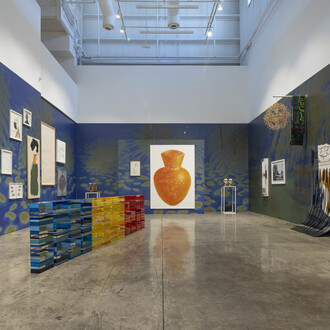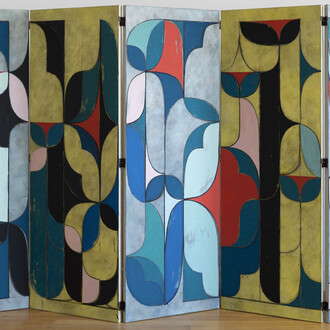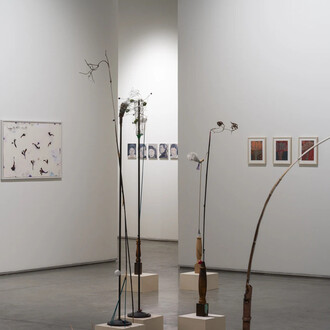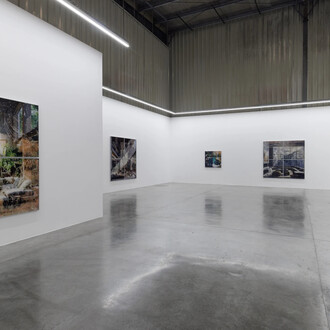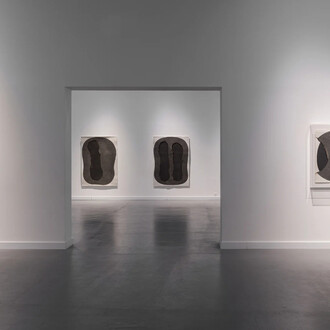Andakulova Gallery is a platform for contemporary art from Central Asia with its current focus on Uzbekistan. Founded in 2012 by an art dealer from Samarkand Natalya Andakulova, gallery’s goal is to cultivate the dialogue between the Central Asia and the Middle East by positioning art of Central Asia into artistic hub of UAE.
Currently the gallery represents a roster of over twenty emerging and established contemporary artists. Today this gallery is known for its well curated exhibitions program and diverse educational program that includes regular drawing workshops lead by local and guest artists as well as presentations on art as an investment and lectures on Islamic art presented by Dr. U. Al Khamis.
Andakulova Gallery, Dubai, the Middle East’s only gallery for Central Asian art, is proud to announce the exhibition of the works of legendary Russian and Uzbek photojournalist Max Penson (1893 – 1959). Penson’s photographs document the economic transformation of Uzbekistan, his adopted home, from a highly traditional feudal society into a modern republic between 1920 and 1940.
They provide unrivalled insights into a time when the country was loosening its centuries-old traditions and was being confronted by new political and social systems.
Max Penson was born in Belarus, graduated from the art school of Vilnius and later moved to Kokand, a city in the Fergana region of eastern Uzbekistan. After the 1917 Bolshevik Revolution (the 100th anniversary of which falls this year), he founded an art school in Kokand. He became the director and taught draughtsmanship to 350 Uzbek children studying there.
In 1921, at age 28, his life changed dramatically when he won a camera as a result of his teaching abilities. He was on the road with his camera, transmitting the upheaval of an ancient culture in fascinating photo reportages, following the rule of “one roll a day”.
He relocated to the Uzbek capital of Tashkent and from 1926 through to 1949, worked for the largest newspaper in Central Asia, the Pravda Vostoka (Truth of the East). He made over 30,000 photographs by 1940 and his images were widely circulated by the news agency TASS.
He was fluent in Uzbek language and this allowed him to create various subjects from intimate to monumental: the education of women and children; the construction of large-scale projects such as the Great Fergana Canal, and many others. His photograph titled ‘Uzbek Madonna’ won the Grand Prize at the 1937 Universal Exhibition in Paris.
The renowned filmmaker Sergei Eisenstein said of his images: “It is virtually impossible to speak about the city of Fergana without mentioning the omnipresent Penson who travelled all over Uzbekistan with his camera. His unparalleled photo archives contain material that enables us to trace a period in the republic's history, year by year and page by page”.
Max Penson, using early generation Leica cameras, became a master of various styles of photography. With the use of dynamic diagonals in his compositions and emphatic lighting, Penson is today rightly regarded as one of the outstanding proponents of Russian avant-garde photography.
He did not just work from an ideological perspective: he regarded photography as an aesthetic challenge, too. The master is among the pioneers who brought the realism of the camera to the magical and mysterious Central Asia.
A photographer, finally, between tradition and revolution, Max Penson’s legacy rests on his extraordinary documentary achievement of portraying, in gripping photo reportages, Uzbekistan's transformation from a medieval social structure to a future.
His work is enduring, as his memory is evergreen: even now, successful exhibitions of his creations have been held in France, Swiss and Switzerland. Works by Max Penson were included in most significant exhibition projects in recent years, from ‘Propaganda and Dreams: Photographing the 1930s in USSR and the US’ (The Corcoran Gallery of Art, Washington DC, 1999), Historiches Museum der Stadt Wien, 2002, to ‘Modernism. Designing a New World’ (Victoria and Albert Museum, London, 2006).










